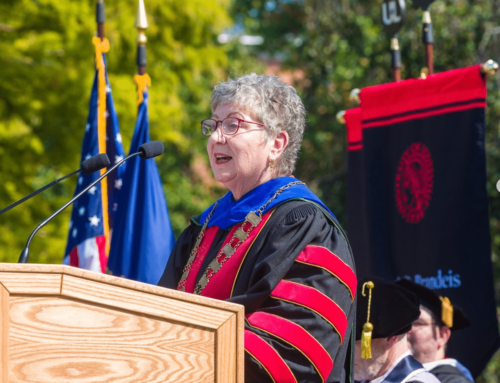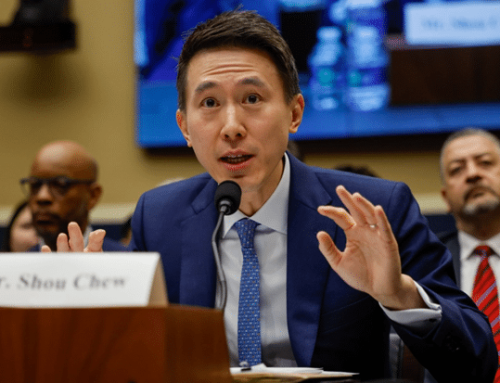By Deanna Tran
Neighboring and cutting through the Belknap Campus of the University of Louisville are miles of train tracks used by heavy locomotives and countless railcars that pass by on an hourly basis.
Just two weeks ago in Bullitt County, a train hauling toxic chemicals derailed and caught fire, forcing the county to declare an emergency. Nearby residents were evacuated and Interstate 65 was shut down.
Just two days before the hazardous crash in Bullitt County, two locomotives in Estill County were struck by multiple railcars, resulting in a fire and chemical spill that led to a limited evacuation.
Immediately after hearing news of the Bullitt County train derailment during a biology class on the day of the accident, sophomore Neesha Patel said she rushed back to her apartment to call her family who lives in Bullitt County to see if they were alright. Fortunately, her family was unharmed, but Patel said that one of the evacuated families was being housed at a hotel owned by her family.
“It’s really rare when things like that happen,” said Patel, a biochemistry major, “but I think it’s possible. They come by like every hour, you know?”
For almost two years, Patel has lived in Bettie Johnson Hall which is located between Fourth Street and a line of railroad tracks. Patel said she feels safe living in the vicinity of the tracks but also admitted that she would not know what to do in the case of a train derailment.
“I generally know what to do for fires and tornados, but anything besides that, I don’t think anybody has a clue about [what to do],” Patel said.
“I would probably run the other way, away from the tracks. It’s not like we go through train derailment drills,” she added.
And she is right. Dennis Sullivan, Assistant Director of U of L’s Department of Environmental Health and Safety, said that the university focuses its emergency training and drilling only for faculty, staff and the Department of Public Safety.
“It’s not efficient to train students because you never know a student’s duration at the university, whereas training a faculty or staff member who is grounded to the university,” Sullivan said.
“That doesn’t make any sense,” said Patel. “It’s going to be more chaotic if students aren’t informed. We don’t need drills, just a flyer or some sort of plan communicated to us in case.”
Sullivan said that DEHS has given out approximately 10,000 Faculty and Staff Emergency Procedure Handbooks to students and staff and has placed the handbooks in every building on campus. The leaflet contains emergency telephone numbers and instructions for 13 emergencies ranging from severe thunderstorms to terrorism threats.
But some students insist that they have yet to see the handbooks.
“For the four years that I’ve been on this campus, I have never seen one of those,” said senior sociology major Duy Ho. “I think it would be very helpful, especially with all this news about trains derailing and spilling chemicals in Kentucky.”
Patel also said she has never seen the emergency handbooks. “I’ve never seen it, I’ve never come across that at either the Life Sciences or chemistry building,” Patel said. “They should put them in the mail boxes of residential halls.”
Sullivan said that at every single building, there is an assigned emergency coordinator. According to Sullivan, DEHS has worked with every building on campus to create individualized emergency action plans that outline designated locations and people during an emergency. These plans are updated and reviewed annually, and faculty and staff are regularly drilled using table top exercises.
Today, DEHS will run through a table top exercise with DPS concerning train derailments.
“The railroad tracks on campus are a potential danger,” Sullivan said, but held that the possibility of a train derailment occurring at the magnitude of that in Bullitt County is small. “The trains that run through campus go 10-15 mph on relatively straight tracks. The chance for derailment is not high, and if railcars were to fall over then the impact will be absorbed considering the low speeds,” he said.
There has also been no history of a train derailment at U of L, according to Sullivan.
But if the university was ever to encounter a significant derailment on campus grounds, Sullivan said that the university has an emergency management plan and is prepared.
In the case of just a derailment, DPS has been instructed to immediately notify the Louisville Fire Department to protect the campus from any resulting fires.
But if a chemical leak transpired, then DEHS will broadcast the emergency to the campus, city residents and city officials via weather radios stationed in each building, the news media and university and city Web sites.
“There are no means for notification for 100 percent of the university, but current layers of communication are sufficient,” said Sullivan.
“I feel bad that there’s no way, unless we staple instructions to everyone’s wrists,” said Sullivan. DEHS is currently working with U of L’s Student Government Association to add text messaging as an instrument for broadcasting emergency announcements.
“Our job is to do the most we can for the most people, but inevitably there’s no guarantee that everyone will be notified,” Sullivan stated.
Depending on the wind current and computer analysis of the plumb area, DEHS will determine whether to execute one of two plans: shelter in place or a campus evacuation.
If analysis indicates that the chemical cloud will pose as a hazard for one to two hours, then the shelter in place plan will be enacted.
During a shelter in place, emergency coordinators will instruct staff, students and campus visitors to stay inside buildings until the leak alert has ended and all air handling units will be turned off.
“But eventually, buildings breathe after a couple of hours,” said Sullivan, and if areas of the campus are foreseen to remain in the path of a chemical cloud for more than two hours, then Sullivan said that DEHS will signal a campus evacuation.
In a campus evacuation, the campus has been divided into three segments – east, west, and south. The area in which the chemical leak took place will be evacuated first and then buildings and students in the remaining segments will be instructed to evacuate away from the hazardous scene. DPS and physical plant workers will direct traffic.
“The biggest problem is finding a place for 3,000 students to reside,” Sullivan said. “We have multiple options for providing space for residential students like at hotels or dormitories of other universities,” but if students are instructed to be kept from their dormitories and residential halls for at most 24 hours, then they will have to stay at the fair grounds. “It would only be for a day, it’s not right to cram 3,000 students,” Sullivan said.
EMS will handle any injuries relating to the derailment, Sullivan said, emphasizing the partnership between DEHS and Metro Louisville for emergencies.
During and after the evacuation from the campus, Sullivan said that there will be increased patrol conducted by DPS along boundaries deemed safe, in order to ensure the security of the campus and people from returning.
When it is deemed safe to return to campus, Sullivan said that DEHS will make public announcements through the public information office, which is responsible for notifying the public.
An exact day and time will be chosen by DEHS for when students and faculty can return to campus. “We control when and how many people can come back on campus,” said Sullivan.
“It’s definitely reassuring that U of L has an emergency plan ready for us,” said Ho, “but they should do more to let students know about it. It will really help everyone in the end.”
Patel also said she was glad to hear of the university’s extensive emergency plan but also suggested that DEHS disseminate the plan more often and in more visible places. “I want to know, I want to know more about this stuff. They should post a sign on every door,” she urged.
“The more things we can do in advance to minimize the situation, the more lives we can save,” said Sullivan. Saving lives is the number one priority of DEHS, he said, followed by saving facilities and then mitigation and precautionary planning.
Sullivan said that students can access emergency action plans and read up on the latest monthly safety articles on the DEHS Web site at http://louisville.edu/admin/dehs/emergen.htm. Students can also visit or call the office at 852-6670. Their office is located at 1800 Arthur St.





